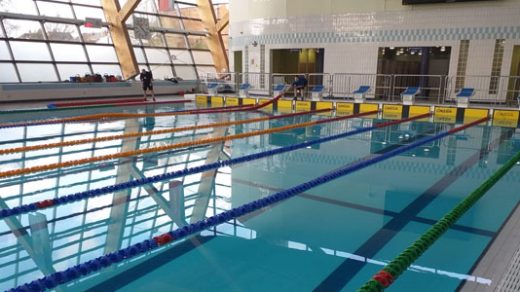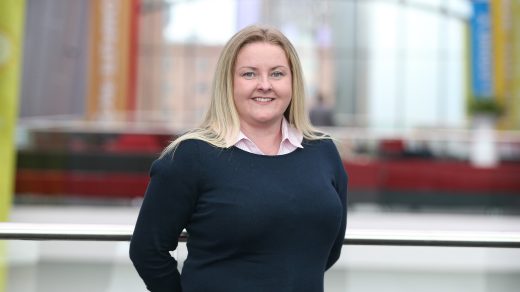Towards Academisation – The Changing face of Education
2016 was quite the year for education. Indeed, it was quite the year full stop with Brexit, political meltdowns and the election of Donald Trump as US president giving the papers plenty to write about. So news-packed were the last 12 months you could be forgiven for skipping over some pretty monumental stories – the government’s u-turn on its plan to turn every school in the UK into an academy being one of them.
By the time then-education secretary Nicky Morgan announced that the mandatory academisation plans, first revealed in March’s Budget, would be scrapped the country was gripped by EU Referendum fever. But the move was a major one. The proposal caused quite the debate when George Osborne announced it, primarily because it would disregard attainment and force even high achieving schools down the academy path.
As part of the u-turn the education secretary revealed focus would now turn to those schools which local authorities could no longer feasibly support or whether minimum performance thresholds are not being met.
However, what has happened since Nicky Morgan’s announcement – and, indeed, since she was replaced by Justine Greening in Theresa May’s cabinet shake up – has been particularly interesting. Because, whilst it is no longer mandatory for all schools to become academies, a number up and and down the country are still looking into this option and our own region is no exception.
Earlier this year Knowsley Park School became The Prescot School, part of The Heath Family multi-academy trust, one of several in Knowsley to make the move. And according to reports The Grange School in Runcorn is considering converting to academy status. The Grange is planning to consult with parents soon.
St Margaret’s C of E Academy in Aigburth knows the process all too well. It converted to academy status in 2012.
“Our May 2015 Ofsted report noted “a trend of improving standards in students’ progress and attainment since the Academy’s founding in October 2012”, which makes it sound as though academisation has resulted in improvements in how our students have performed,” says principal Stephen Brierley. “The reality is more complicated: academisation is not a magic wand! And in any case, the 2013 and 2014 cohorts were educated for most of their secondary school careers in our predecessor Voluntary Aided school, not our new Academy.
“Having said that, academisation has given us more flexibility in some areas. Academies can set their own pay and conditions for staff, for example – although when we converted, a clause was added to the various legal agreements to guarantee that staff here would never have worse terms and conditions than the national frameworks provide for. Academies don’t have to follow the National Curriculum – although again, we have chosen to do so. Early converters did have some financial incentives, although by and large these have been eroded by other factors in the school funding calculations now. Although we haven’t used the additional freedoms we have to anything like their full extent, it is useful to know they are there if we want to use them.”
Such is the interest from schools in the academy route the Diocese of Liverpool has confirmed it is in consultation over whether to create an academy trust of its own.
“We are in a time of immense change in education,” Father Richard Peers, the Diocesan director of education told Educate magazine. “Church schools have always led the way in new developments to ensure the very best provision to enable pupils to flourish. In May 2016 my predecessor launched an academies consultation and in response to requests from heads and governors we added to that, in September, the idea of Diocesan led Multi Academy Trusts to which the majority of our schools will belong, alongside a number of smaller, school-led trusts.”
Father Richard says he has had many conversations with the Diocese church schools and most are open to the process and believe that it can deliver real benefits for the school and most importantly its pupils.
“Governors and headteachers want to preserve what is excellent about church education – the values that sustain us and the distinctiveness that comes from having a grounding in our Christian faith,” he says. “The schools in our consultation are very positive about the idea of coming together in a multi-academy trust where we can strengthen the relationships of our family of schools. With 93% of our schools being good or outstanding we want to build on and share that good practice.
We want to create world leading, research-centred schools that build on our excellent reputation.”
There are, of course, issues that would need to be addressed. By their very nature Academy Trusts bring schools together but one wonders whether a Diocesan Trust have to be exclusionary to some schools, namely those of a different faith.
Father Richard says this is not the case.
“Church schools are not simply for the faithful, they are a way the church serves the entire community and we already have non church schools in our existing trusts,” he says. “ We believe that collaboration between schools and communities is to everyone’s benefit. We already have joint schools with the Roman Catholic, Methodist and United Reformed Churches and we would welcome collaboration with other faith groups.
“We believe that the process of academisation can be used as one among many vehicles for increasing collaboration and for school-led improvement. Structures are important and we believe that setting up our own trusts will guarantee the inheritance we have received for future generations. Structures are only part of the story, people are at the heart of all we do and people flourish when relationships are built on trust and goodwill. We are proud that our schools are places where people flourish and whatever the structures will work to ensure that continues.”
Indeed, collaboration in education has long been lauded as one of the key drivers of success for schools. According to a report produced for the Department for Education by Dr Paul Armstrong, a lecturer in education at the University of Manchester, there is extensive research pointing to the positive influence of inter-school collaboration on teachers and teaching, “with practitioners reporting an increased motivation to engage in professional dialogue with their colleagues, knowledge mobilisation and
a general shift towards more learning-oriented and enquiry-based cultures in schools that have been collaborating”.
Dr Armstrong says there is also evidence of “inter-school collaboration facilitating curriculum development and problem-solving”.
But how important is academy status in all of this? And how has something that was originally designed for struggling schools become a strategy for all?
Let’s take a look at some background.
Originally a policy of the Labour government under Tony Blair, the purpose of academies was to help improve schools which were in difficulty. Over time however this has changed.
A spokesperson for the Department of Education told Educate: “The Education and Adoption Act 2016 took effect from 18 April 2016 and puts the Secretary of State under a duty to make an academy order for any school which is rated inadequate (category 4) by Ofsted, either due to a special measures or serious weaknesses judgment. In these circumstances, the Act removed the requirement for a consultation on whether to become an academy.”
There are three groups of schools which are defined as causing concern and therefore eligible for formal action:
• Schools that have been judged inadequate by Ofsted
• Schools that are coasting
• Schools that have failed to comply with a warning notice
Local authorities and Regional Schools Commissioners (RSCs) acting on behalf
of the Secretary of State have powers to intervene in maintained schools. RSCs
are able to take action in underperforming academies.
“To minimise any delays in schools judged inadequate becoming academies, the governing body and local authority are under a duty to take all reasonable steps to enable this to happen,” says the spokesperson. “If necessary, RSCs are also able to direct the governing body or local authority to take specific steps within a set timescale.
“The Act gives Regional Schools Commissioners (RSCs) the power which local authorities already had to issue warning notices where a maintained school is causing concern (but has not been judged inadequate or met the coasting definition), for example where the school’s performance is below floor standards, or where leadership and governance has broken down or safety is threatened.”
Coasting schools will first be identified and supported once revised performance data is published. A school is coasting when it is not consistently ensuring that all children reach their potential. The coasting definition is based on published performance data rather than Ofsted judgements and reflects the same headline accountability measures used for floor standards. It reflects the progress that pupils make in a school considers performance over three years; a school will have to be below the coasting bar in all three years to be defined as coasting.
A primary school is coasting if:
• In 2014, fewer than 85% of pupils achieved level four in reading, writing and mathematics and less than the national median achieved expected progress in reading and writing and mathematics, and
• In 2015, fewer than 85% of pupils achieved level four in reading, writing and mathematics and less than the national median achieved expected progress in reading and writing and mathematics, and
• In 2016, fewer than 85% of pupils
meet the expected standard in reading, writing and mathematics, and the school achieves a score below the set progress bars in reading, writing or mathematics.
A secondary school is coasting if:
• In 2014, fewer than 60% of pupils achieved 5 A*-C at GCSE (including English and maths) and less than the national median achieved expected progress in English and in maths.
• In 2015, fewer than 60% of pupils achieved 5 A*-C at GCSE (including English and maths) and less than the national median achieved expected progress in English and in maths.
• In 2016, the school’s Progress 8 score is below the set coasting progress bar.
The DfE believes schools have a better chance of improving performance if they are academies.
The spokesperson adds: “Evidence from around the world clearly demonstrates that educational performance is improved by giving autonomy to frontline teaching professionals and holding those professionals to account for the outcomes they achieve for young people. It is not the case that every academy performs better than every local authority school; but the academy system makes it easier to put in place those factors – better teaching, leadership, curricula and accountability – that incontrovertibly drive up standards.
It better allows under-performance to be tackled when it does occur; and establishes a system more likely to lead to long-term improvements in results”.
Such findings also explain why schools that aren’t failing or coasting are looking to this route.
What is widely argued is that choice is essential. Forcing all schools may not have been welcomed but allowing all schools to, certainly has been. Edge Hill University vice-chancellor, Dr John Cater, says “removing the stipulation was a good move and what really matters most is ethos.”
“The government’s policy to no longer force all schools into academy status is a sensible one,” he says. “Different structures and systems will work for different schools and communities, and removing compunction helps facilitate that. But the most important factors are proper resourcing, excellent teaching and a culture and ethos which encourages, challenges and supports each child and each stakeholder to do their very best, set in an economy and society which gives each pupil the best opportunity of fulfilment in their future career and life.”
And that is something everyone operating in education can agree on.
How to become an ACADEMY
Schools looking to go down the academy route must apply to do so.
Consent will need to be sought from the governing body, the school’s religious body (for faith and church schools) and from the academy trust the school is looking to join.
Applications are considered on a case by case basis and a number of factors will be considered including the school’s exam results from the last three years, the progress of the school’s pupils over that time, most recent Ofsted inspections and the school’s finances.
It is advisable to seek legal advice and the DofE recommends schools appoint a solicitor once an application has been approved.
The school should notify its local authority of its intention to apply for academy status.
Once an application has been completed and approved the school should set up or join an academy trust and transfer responsibilities to that trust.
Before opening you’ll need to appoint an academy officer, ensure correct insurance is in place and notify exam boards of the change of status.
For more information on the academisation process visit www.gov.uk.




